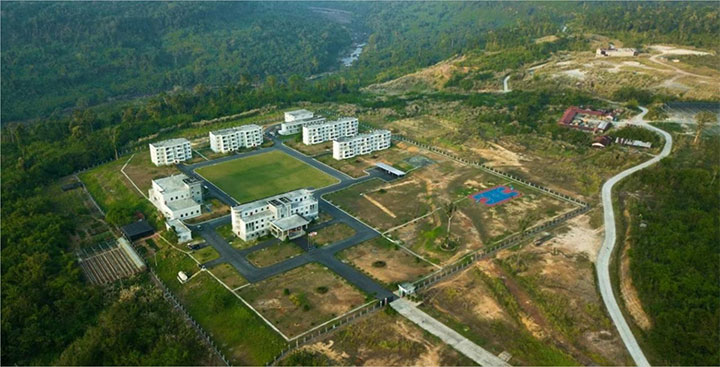Cambodia's Tatai Hydropower Station Accelerates Digital Transformation with a Huawei FTTO Solution
This site uses cookies. By continuing to browse the site you are agreeing to our use of cookies. Read our privacy policy>
![]()
Enterprise products, solutions & services
Tatai Hydropower Station, located on the Tatai River, some 261 km away from Cambodia's capital, Phnom Penh, delivered a total of more than 7 billion kWh of feed-in energy in 2021, having kept safe production running for over 2600 days. Indeed, the station has won the Excellent Power Generation Enterprise Award from the state-run electricity utility Electricite du Cambodge (EDC) for consecutive years and, in 2018, the Koh Kong provincial government additionally recognized the station with its Award for Outstanding Social Contribution.

With the emergence of the digital economy, the Royal Government of Cambodia (RGC) officially unveiled its Cambodia Digital Economy and Society Policy Framework 2021–2035, formulating 139 specific measures to build up digital infrastructure. With hydropower generation closely related to social development, overall, and as a pioneer in the field, Tatai recognized that it too had to focus on its own digital infrastructure, identifying digital innovation on campuses as one of the primary tasks of digital transformation.
While the construction of Cambodia's digital economy and supporting infrastructure is moving slowly due to a lack of Information and Communications Technology (ICT) talent, Tatai found that it faced an additional tranche of transformation challenges.
To start off, it was struggling with insufficient network bandwidth and a poor user experience. In traditional solutions, switches are cascaded, with copper cables used for transmission, delivering slow and unstable network speeds. Indeed, rates only reach 16 Mbit/s at a distance of 100 m. Plus, 90% of copper cables can't be upgraded to gigabit cables.
Tatai also found itself struggling to roll out new services, with construction proving complex. Multiple services coexisted on its legacy campus, from telephone to Internet access and High Definition (HD) TV. All of these service systems had been constructed separately and the inevitable end result was cabling that was highly complex. Rolling out new services therefore took far too long and, with multiple networks and devices stacked, network scalability was extremely poor.
Tatai realized that it needed a new, future-facing, high-speed, and stable network that could carry multiple services, including Internet access, emergency calls, and video backhaul. In addition, Tatai wanted any new network to be green and energy-saving, to support its own sustainable development goals.
Huawei proposed its innovative Fiber To The Office (FTTO) Solution as an answer. The solution combines the simplified architecture of a Passive Optical Local Area Network (POL) with all the advantages of Internet Protocol (IP) technologies, to address campus challenges. The solution has also brought three core benefits to the station.

First, a high-speed, stable, and future-oriented network now provides gigabit access for terminals, ensuring access anytime and anywhere. The FTTO solution supports smooth evolution from GPON to 10 GPON, and even 50 GPON, without any need to change the platform. As a result, the high bandwidth requirements of massive digital applications, such as information backhaul and emergency calls, can easily be met in the future.
The solution is characterized by converged bearing and simplified Operations and Maintenance (O&M), extending fibers to rooms to provide HD TV services in dormitories and high-speed network services in office areas. With multiple services carried over one fiber, the entire network can be managed in a simplified way. Optical Network Units (ONUs) are plug-and-play and can be replaced immediately if a fault occurs. This massively improves the efficiency of network maintenance, allowing a single person to manage the entire campus, slashing O&M costs by 70%.
And it's also clear to see: simplified architecture helps save energy, with passive optical splitters replacing active switches, and the legacy three layer architecture transformed into two. The need for Extra Low Voltage (ELV) equipment rooms has been eliminated and there is also no need for a power source, route cables, or auxiliary devices such as air conditioners and disaster prevention equipment, thanks to those passive devices. The overall effect sees power consumption drop by 60%, compared to a traditional network.

Passive ODNs replace ELV equipment rooms